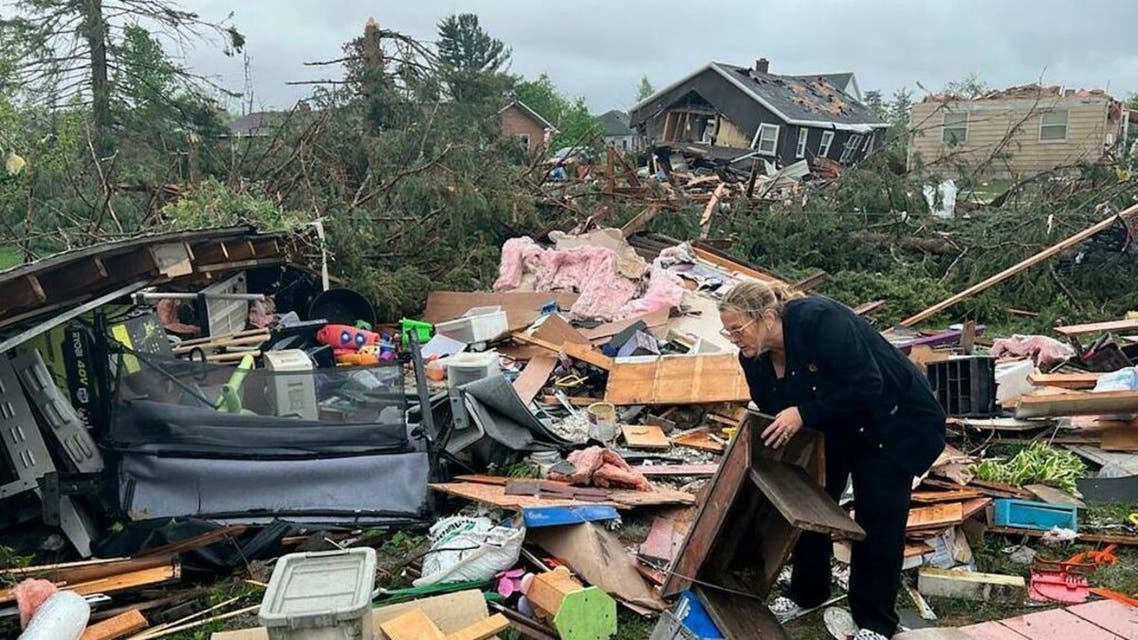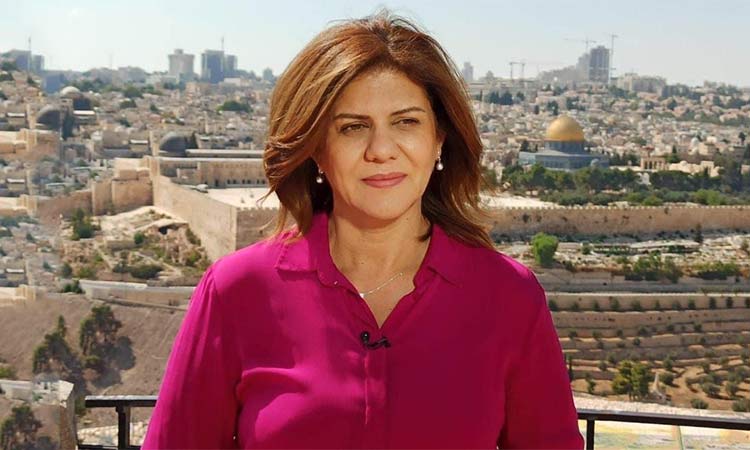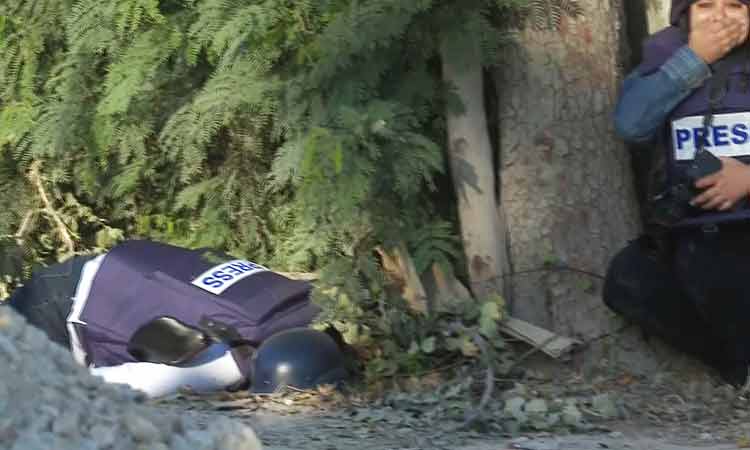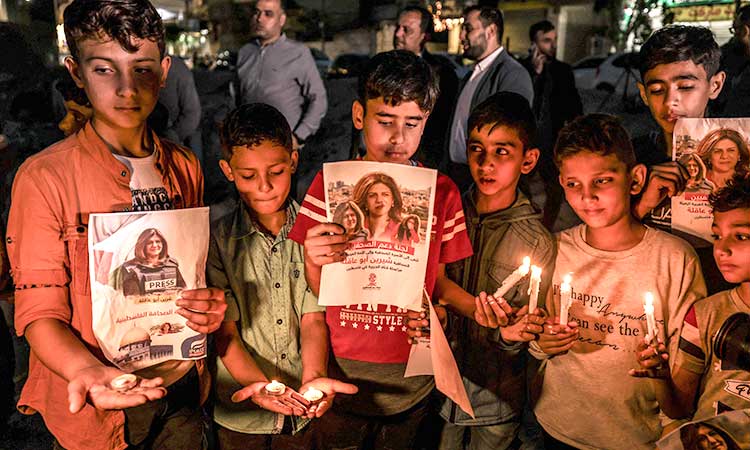


Miran Maa — the female saint of Lyari
Even at the peak of Lyari's gang wars, the shrine of Miran Maa was the one place no gang leader dared to desecrate in any form.
Published May 12, 2022
A short drive past Baba-i-Urdu Road and the Dr Ruth Pfau Civil Hospital, Lea Market’s ghanta ghar [clock tower], numerous colonial era buildings and down narrow, winding lanes with speed breakers too high for a car to navigate comfortably, stands the shrine of Lyari’s only female saint — Miran Pir, also known as Miran Maa.
The area, Lyari, is one of the oldest quarters of Karachi and has of late, come to be known as one of its most violent. Per some historians, Lyari existed as a goth [small village] before present day Karachi was established in 1729 as a fortified trading post.
According to Zubair, the current khalifa of the shrine, his ancestor, Jamal Shah, bought the six acres of land on which Miran Maa’s shrine is located, when he moved here from Baghdad in 1645. However, apart from a house for his family, the land remained vacant until 1693 when Jamal Shah, honouring the wishes of his murshid, Ghous Pak — one of the most important Sufi saints — built a quba [empty structure in which he could demonstrate his power] and a mosque.

The shrine of Miran Maa. — All photos provided by author
Over time, a cemetery also named Miran Pir was added to it. As per Zubair, the name Miran Pir was one of the 11 names of Ghous Pak and the space was created for those who venerated him.
But how did a space associated with one of the holiest men in Sufi Islam become a woman’s shrine?
Legend has it
Miran Maa, also known as Bibi Pak — on account of her dying as an unmarried virgin — came to Karachi approximately 162 years ago. Legend has it that she was on her way back from Hajj to Gambat in upper Sindh — where she commanded a respectable following due to her affiliation with two important Sufi households — but fell ill and was given shelter at the home of one of her disciples. According to the Khalifa, she could see the minaret of the mosque from her room's window and instructed her brother and disciples to bury her within the quba built for Ghous Pak.
After her death, her disciples brought her to the space and tried to honour her wishes. However, they were stopped by the Khalifa of the time, Raza Muhammad I, who declared that, like everyone else she should be buried in the Miran Pir burial ground. The condition he placed for her burial inside the quba was that its doors should open by themselves, thus indicating that the space was meant for Miran Pir. Her disciples agreed.
According to Zubair, Raza Muhammad I instructed everyone else to leave while he stood near the mosque and kept an eye on the doors to the quba. When they miraculously flung open at some point during the night, he declared that Miran Maa could be buried there.
Since then, the space created in honour of Ghous Pak has come to be associated with Miran Maa, a female saint, who is venerated for her piety and connection to God. The people of Lyari — Sindhi, Baloch, Memon, Kutchi — pay homage to this shrine and its inhabitant. Newlyweds flock to the shrine immediately after their nikah to gain Miran Maa’s blessing; unwed women come to her shrine to ask for good marriage prospects; and people facing fertility issues, illnesses, or problems with their children prefer praying at the shrine rather than going to a doctor.
When we visited the Miran Maa shrine, we found the Khadima [female caretaker] sitting adjacent to its front door. With her back to the graves of the khalifa's ancestors, she was busy making amulets for “fever that doesn’t go away” and other illnesses. She invited us to go in and pay our respects to Miran Maa before talking to her or the khalifa, saying that was the adab [custom].

The female caretaker making amulets for some fakeers who visit the shrine regularly
Upkeep of the shrine
According to the khalifa, the shrine is washed and painted every year after the 12th of Rabiul Awwal — the third month of the Islamic calendar.
The current structure of Miran Maa’s tomb is new — the old Gizri stone and red brick structure was demolished in 2008 and replaced with more modern materials and elements — except for the carved wooden door and the engraved marble plaque on top of it.
The first thing one sees from the door is a great green umbrella held up by wooden pillars on the four corners of the grave, completely covering it on three sides. Only one side is left open, facing a wall, for women who are allowed to go inside. The khadima instructed us to walk around it in an anti-clockwise direction, saying that was the correct adab.
The air inside the tomb felt cooler than the weather outside even as the bright LED lighting bounced harshly off the glistening white tiles. Colourful streamers and Quranic calligraphy adorned parts of the walls. Amid all this, in the center, lay Miran Maa’s grave — the only part of the shrine that had been left untouched in the renovation process. Built of marble engraved with abstract and flower motifs, it was covered with a green chaadar, engraved with verses from the Holy Quran — and strings of roses.
The grounds on which Miran Pir’s shrine is located also hosts other asthanas — such as that for the Satiyoon Bibi (Seven Sisters) whose original tomb is in Sukkur, or for Shah Pariyoon (Royal Fairy), or even Khwaja Khizr, the fabled saint of Sukkur who is believed to have saved Rohri, Sukkur, and Landsowne Bridge during the 1965 war.
Interestingly, the figures to whom these three asthanas are dedicated to are revered by Hindus and Muslims alike, especially in their native regions. According to Zubair, the asthanas were built recently so that women who could not travel to the original resting places of these personalities could still pay their respects to them from here.

Asthana of the Seven Sisters. The woman seen here is a fakeer at this asthana and sits here from 8am till the shrine closes after Maghrib prayers every day.
A female saint?
The idea of a female saint in Islam has not found acceptability among all schools of thought. For instance, some Sufi teachings by saints such as Farid-al-Din Ganj-i-Shakar state that a female mystic or saint is just “a man sent in the form of a woman,” whereas others such as Suhrawardi and al-Ghazali do not believe that female mystics can exist.
On the other hand, Ibn Arabi challenges this idea by saying that men and women were equal in everything, including “all stations of sainthood”, going as far as to say that female mystics can also achieve the status of shaykh (spiritual guide).
Perhaps it is the teachings of Ibn Arabi that influenced Lyariites rather than those of al-Ghazali or Baba Farid when they gave so much importance to Miran Maa.
According to Zubair, even at the peak of the gang wars in Lyari, the shrine of Miran Maa was the one place no gang leader dared to desecrate in any form. In fact, while almost no part of Lyari was spared from the fighting, Miran Maa’s walls remained untouched and the gang leaders actually paid for renovations or any other work that was needed for the shrine, including the annual urs and the chaadar that is placed on her grave.

The space in the compound where the jirga was held.
As an unwritten rule, no fighting could take place within the confines of the shrine and no weapons were allowed inside. He added that the leaders would meet here, and any decision taken by the informal jirga that emerged was considered binding upon the participants.
Although Miran Maa’s story takes place well after the British conquest of Karachi, there are many other stories and shrines and temples that date back well into pre-colonial times. This article is a modest attempt at documenting what’s left of this rich inheritance before it, too, disappears.

The author is a Social Development & Policy graduate whose primary interests lie in researching the cultural and tangible heritage of Karachi.


























